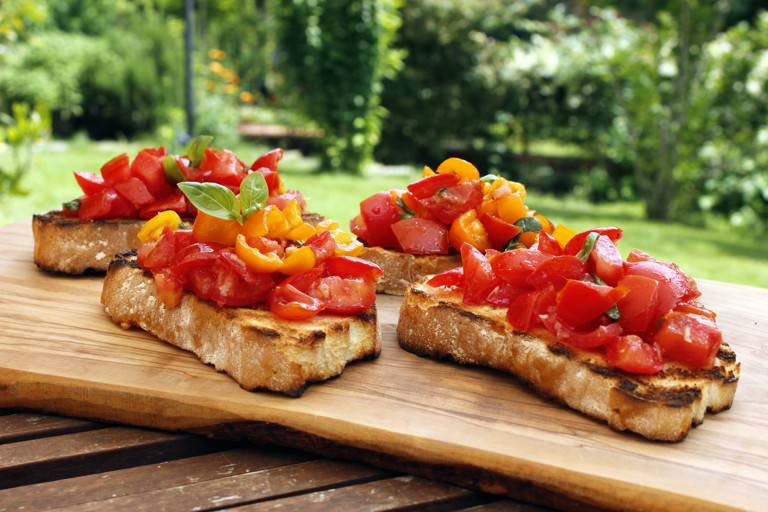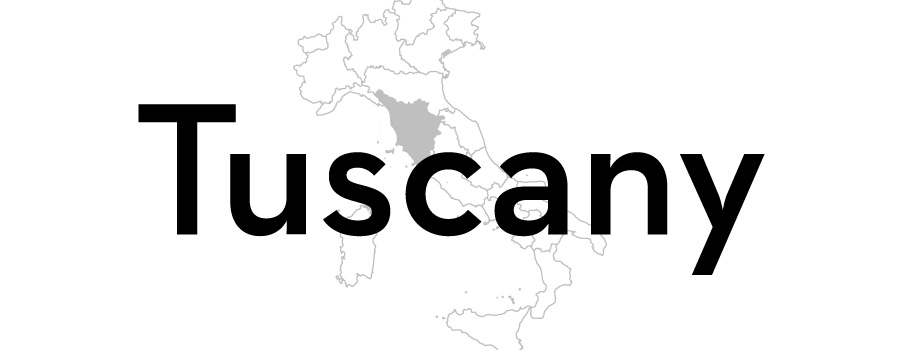Tomato bruschetta
Like so many of Italy’s best dishes, bruschetta owes its origins to la cucina povera, whose customary marriage of frugality and ingenuity among Italy’s peasant class dictated that nothing edible ever be tossed out. In the case of bruschetta, stale bread is made over to something not just edible but really tasty, by the mere act of toasting and topping with quality ingredients like sun-ripened, organic tomatoes and an impeccable extra virgin olive oil.
Basic bruschetta is remarkably simple, comprised of a toasted (or grilled) slice of bread – preferably a rustic, hardy kind such as Tuscan or Pugliese – rubbed with fresh garlic while still warm, then drizzled with olive oil and dusted with salt and pepper. In many places, the custom is to brush these ingredients on both sides of the toasted bread, making for a seriously heady flavour experience and rather messy fingers.
Wherever tomato production excels, bruschetta served with chopped tomatoes, garlic, fresh basil or oregano, and olive oil has also become very popular. In fact, unless specified otherwise, ordering bruschetta in an Italian restaurant often means this tomato version instead of the basic garlic-and-oil type.
A few words on the name. In Italian, the word for something toasted is abbrustolito or bruscato, the latter from the verb bruscare, synonymous with bruciare (‘to burn’) but also meaning to brush with a brusca – a large brush with coarse bristles, similar to the type used to brush horses. Since bruschetta is both ‘burnt’ and ‘brushed’, possibly the name derives from both these verbs. Other names for bruschetta vary from region to region. For instance, in Tuscany it’s known as fettunta, from fetta (‘slice’) and unta (‘oiled’ or ‘greased’).
Ingredients
Metric
Imperial
Bruschetta
- 4 slices of bread, large, such as rustic Tuscan or Pugliese bread
- tomatoes, ripe, 300–400g
- extra virgin olive oil, very good quality, 3–4 tbsp
- garlic cloves, 1–2
- basil leaves, 4–5, plus more to garnish
- salt
- pepper
Method
Get in touch
Please sign in or register to send a comment to Great British Chefs.




